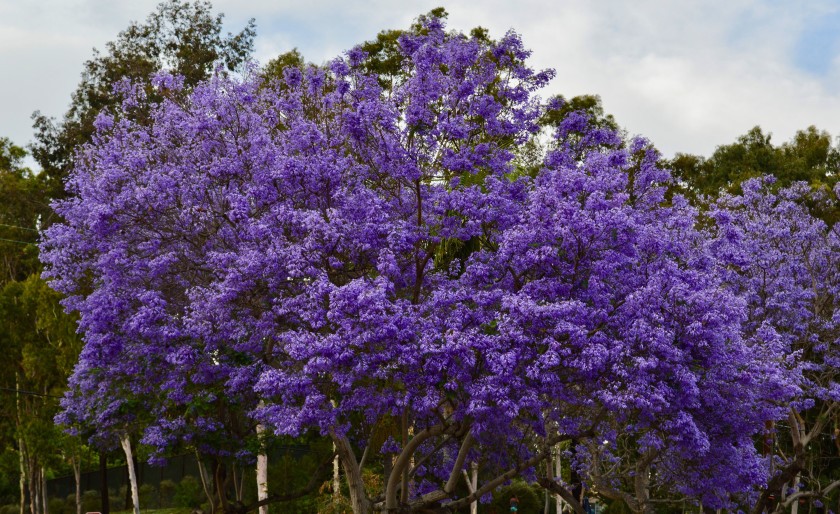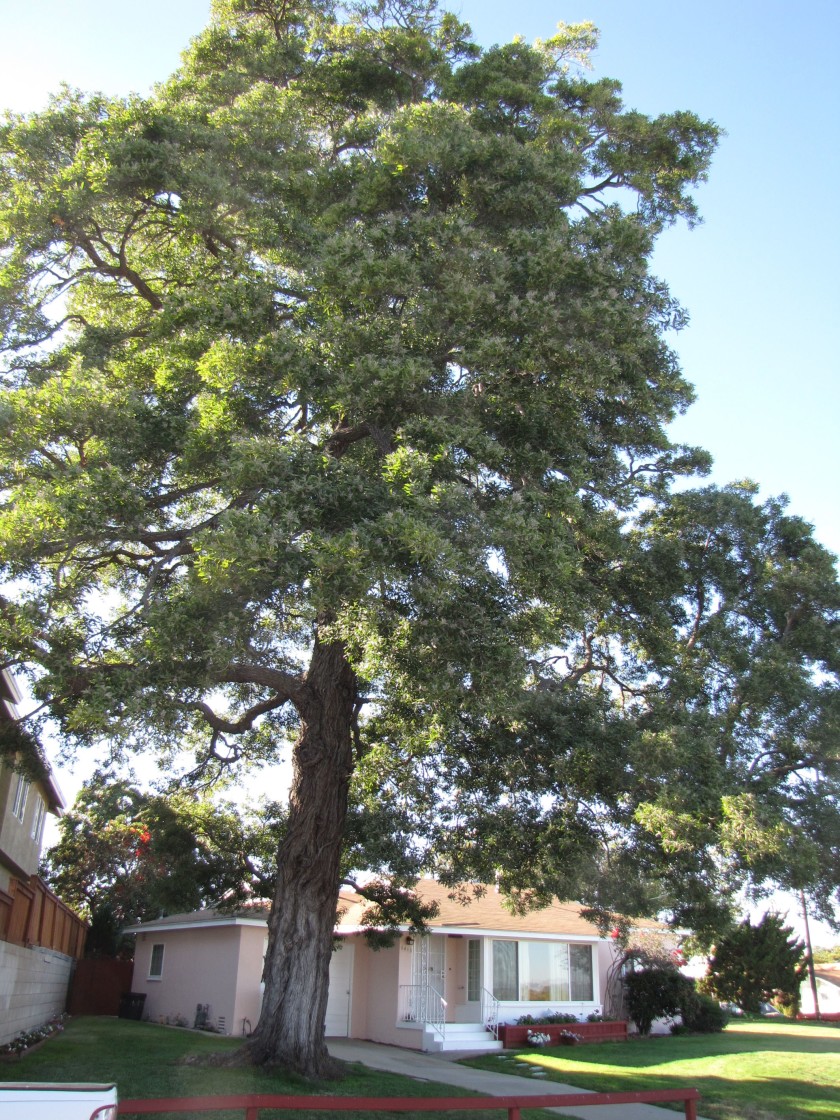Planted tree is one of nature’s life preservers

The jacaranda tree has fernlike leaves and generally blooms in mid- to late spring, with a profusion of purple blossoms. It’s one of many tree species that can thrive in the San Diego region’s Mediterranean climate.(Richard Restuccia / UCCE Master Gardener)
Adding one brings shade, home for creatures and psychological benefits
When I travel San Diego neighborhoods, I am left with the impression that we need more trees. A tree provides beauty, the wonderful sound of leaves rustling in the breeze, a home for wildlife, and much needed shade. Hedges and ornamentals are nice, and no garden is complete without them. But trees are the transformational and functional powerhouses that can improve living conditions, uplift neighborhoods and aid our planet.
Planting a tree is a significant investment in improving life on earth. Trees help mitigate climate change and reduce carbon dioxide by converting it to carbohydrates and releasing oxygen in the process. Trees absorb airborne pollutants and dust particulates. They provide shade. To reap the full spectrum of their gifts, however, we must grow trees that will stand the test of time. We can do this by selecting the right trees, in the right location, and providing the right care.
Trees that are suited to our Mediterranean climate are usually waterwise choices. Olives, eucalyptus, jacaranda, magnolia, acacias and native oaks are good examples. Cypress, juniper and some pines, such as Aleppo, stone and Torrey, are also well suited to our area. San Diego is uniquely situated to growing citrus fruits, but don’t let that stop you from exploring the vibrant range of other fruit-bearing trees, such as figs, pomegranates, persimmons and more. For research-based information about fruit trees, visit http://homeorchard.ucanr.edu/.

The black acacia tree is a fast-growing evergreen that can reach 40 feet in height.(UCCE Master Gardener Robin Rivet)
It is important when placing a tree in the landscape to imagine it full grown. Selecting the right tree for each location greatly improves its health and reduces problems. Determine the function of the tree: Is it for shade, windbreak, privacy, aesthetics or harvesting fruit? Consider shape, mature height, foliage, canopy spread, potential root damage, and maintenance. Visit websites for the University of California’s Division of Agriculture and Natural Resources or the Urban Forest Ecosystems Institute at Cal Poly for comprehensive information on tree culture.
Native trees are a good choice and will thrive in their appropriate zone. California Native Plant Society-San Diego Chapter (cnpssd.org) is an excellent resource for natives. Native trees will have a positive impact on biodiversity because they are suited to our existing flora and fauna and support other native species.
Once the decision is made on what and where, get your tree off to a great start. Buy small — trees purchased small often take off faster. Look for a healthy root system, strong branch structure and a thick central leader. Do not buy trees that have signs of topping (cutting off the leader trunk) or that have damage to the trunk bark or limbs. Bare root trees can provide fruit within a few years if treated properly.
Trees need to be planted a bit “proud,” or lifted, above the soil. Find the tree crown by scooping away soil to expose where the trunk meets the roots; there should be a slight flare visible in the trunk’s diameter. That flare should be at least an inch above soil after watering. A complete guide to research-based planting instructions is available at www.ucanr.edu under publication 8046, Planting Landscape Trees. Remember to face grafting scars away from sun exposure.
Once you have planted your sapling, fill the planting hole with original soil and pack firmly enough to stop the tree from rocking. You do not want to stomp down on its root structure, just firm it in; a common method is to heel the tree in, never applying pressure anywhere but at the edge of the planting hole.
Do not add amendments or fertilizers. You want to avoid rapid green growth that would come from fertilizer. Spread 3-4 inches of organic mulch like wood chips around the base of the tree. Always keep mulch 3 inches away from trunk. Do not plant competing grasses or shrubs beneath a tree’s branch line as they will rob young trees of vital water and nutrients.
Trees must receive sufficient water during the first five years of their life. Do not water near the tree crown. Instead, water at the tree’s drip line (the edge of your planting hole, widening to the tips of its branches as the tree grows). Young trees need more frequent watering. For this reason, I make winter and early spring my tree planting months. Water deeply three days after planting and then for the first six months of a tree’s life, water deeply once a week. For the remainder of the first year, water every other week in absence of soaking rain. Deep watering encourages the formation of robust roots underground. Once roots are well established, water deeply and infrequently, watching for signs of drought stress — are leaves wilting, yellowing curling or browning at the edges?
Regularly inspect trees for signs of insect damage; if you suspect disease, consult a certified arborist. After all the work you have done, spend some time outside. Enjoy your trees and watch them for changes to catch problems early on. Odds are, your mood and health will improve immensely from this exercise, as will your trees.
Resendes is a member of the UCCE San Diego County Master Gardener Class of 2020. Get free gardening advice on the Master Gardener Hotline, (858) 822-6910, or by email at help@mastergardenersd.org. Due to COVID-19, the Master Gardener Hotline staff members are working remotely to ensure they respond to your questions in a timely manner.

